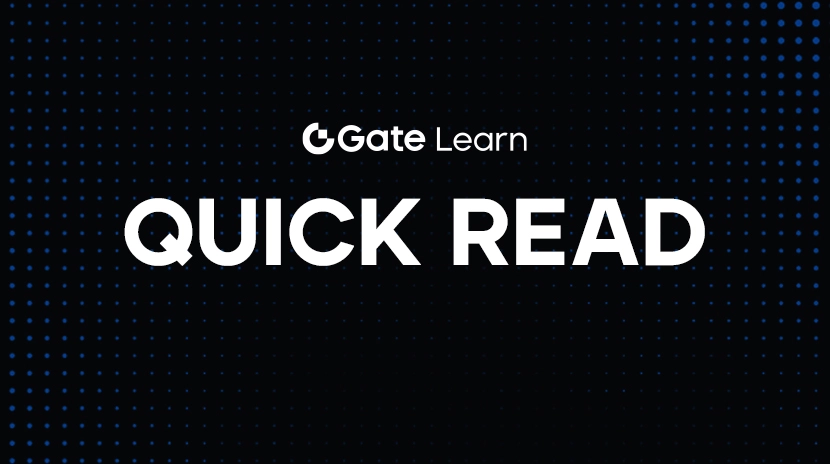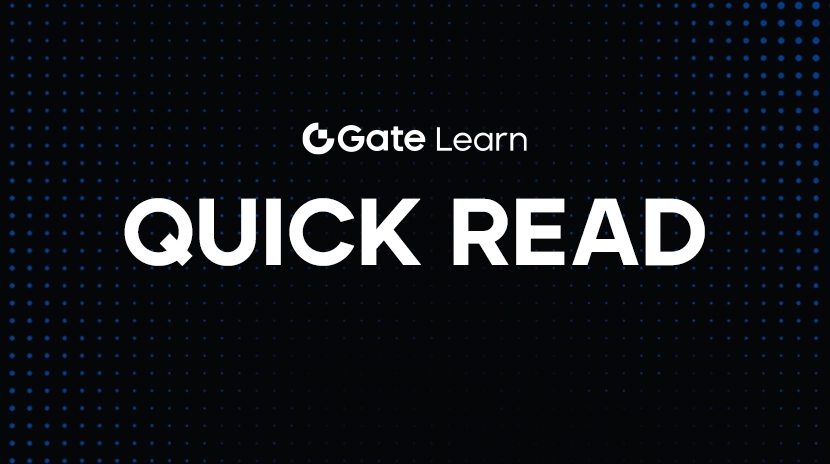Qué es Roam (ROAM): La red inalámbrica descentralizada más grande del mundo
1. Introducción
En la era digital actual, la conectividad a Internet se ha convertido en una parte indispensable de la vida y el trabajo de las personas. Con la popularidad de los dispositivos móviles y la creciente demanda de redes estables y de alta velocidad, las arquitecturas de red centralizadas tradicionales se enfrentan a muchos desafíos, como cobertura limitada, congestión de la red, problemas de privacidad y seguridad. En este contexto, han surgido proyectos de redes descentralizadas, siendo el proyecto Roam uno de los más destacados.
Roam se compromete a construir una red WiFi global descentralizada, proporcionando a los usuarios servicios de conexión de red sin fisuras, seguros y rentables a través de tecnología innovadora y mecanismos de incentivos, con el potencial de remodelar el panorama de la conexión de red global.

2. Antecedentes y objetivos del proyecto Roam
2.1 Puntos de Dolor de las Conexiones de Red Tradicionales
Las implementaciones tradicionales de redes WiFi dependen principalmente de proveedores de servicios de red centralizados (ISP). Estos ISP a menudo requieren una construcción de infraestructura a gran escala, incluidas estaciones base, tendido de fibra óptica, etc., lo cual no solo es costoso, sino que también es difícil lograr una cobertura integral en áreas remotas o áreas con una cobertura de red débil. Además, la arquitectura de red centralizada es propensa a un punto único de falla. Una vez que el nodo central tiene problemas, puede causar un parálisis de la red generalizada. Durante la congestión de la red, como en eventos grandes o áreas comerciales densamente pobladas, la experiencia del usuario se verá gravemente afectada, con velocidades de red significativamente reducidas o incluso la imposibilidad de conectarse.
Desde la perspectiva de la privacidad del usuario, los proveedores de servicios de red centralizados pueden recopilar una gran cantidad de datos de uso de la red del usuario, lo que plantea riesgos de filtración o abuso. Cuando los usuarios utilizan la red, a menudo necesitan proporcionar información personal a los proveedores de servicios de red, lo que aumenta aún más el riesgo de filtraciones de privacidad.
2.2 El objetivo del proyecto Roam
El proyecto Roam tiene como objetivo construir una red WiFi global descentralizada, rompiendo las limitaciones geográficas y los cuellos de botella centralizados de las conexiones de red tradicionales. Al utilizar la tecnología blockchain, nodos distribuidos y contratos inteligentes, Roam logra la gestión y operación autónoma de la red, mejorando su cobertura y estabilidad. Al mismo tiempo, Roam se centra en proteger la privacidad del usuario para garantizar la seguridad de los datos del usuario.
Los objetivos específicos incluyen:
- Conexión global sin problemas: Permitir a los usuarios acceder de forma rápida y sencilla a la red Roam sin importar dónde se encuentren, para lograr un verdadero roaming global sin problemas.
- Mejorar la eficiencia de la red: optimizar la distribución del tráfico de la red, reducir la congestión de la red y aumentar la velocidad de transmisión de la red a través de una arquitectura descentralizada y un algoritmo de enrutamiento inteligente.
- Incentivar la participación de los usuarios: Establecer un mecanismo de incentivos razonable para alentar a los usuarios a compartir su ancho de banda de red inactivo, aumentar la disponibilidad de los recursos de la red y permitir que los usuarios obtengan beneficios económicos del uso compartido de la red.
- Garantía de seguridad de privacidad: Utilizando la tecnología de cifrado y almacenamiento distribuido de la cadena de bloques para asegurar que los datos de uso de la red de los usuarios no se filtren ni se utilicen de manera abusiva, protegiendo la privacidad y la seguridad de los usuarios.
3. Arquitectura de tecnología de Roam
3.1 Aplicación de la Tecnología Blockchain
El proyecto Roam está construyendo su infraestructura de red basada en tecnología blockchain. Blockchain, como tecnología de libro mayor distribuido, tiene las características de descentralización, inmutabilidad y trazabilidad, proporcionando sólidas garantías de seguridad y confianza para la red Roam.
En la red Roam, blockchain se utiliza principalmente para registrar la información de los nodos de la red, los comportamientos de conexión de la red de usuarios y la ejecución de mecanismos de incentivos. Cada nodo de la red participa como un participante en el blockchain, verificando y registrando transacciones a través de algoritmos de consenso (como Prueba de Participación (PoS) u otros algoritmos adecuados). Cuando un usuario accede a la red Roam, sus solicitudes de conexión y datos de uso se registran en el blockchain para garantizar la autenticidad e inmutabilidad de los datos.
La función del contrato inteligente de la cadena de bloques también desempeña un papel clave en el proyecto Roam. Los contratos inteligentes se utilizan para automatizar la ejecución de los mecanismos de incentivos de la red, por ejemplo, cuando los usuarios comparten el ancho de banda de la red, los contratos inteligentes emitirán automáticamente recompensas correspondientes a los usuarios según reglas preestablecidas. Al mismo tiempo, los contratos inteligentes también se pueden utilizar para gestionar los permisos y las calificaciones de los nodos de red, garantizando que solo los nodos que cumplan con las condiciones puedan participar en la operación y mantenimiento de la red.
3.2 Red Distribuida de Nodos
La red Roam consta de un gran número de nodos distribuidos, que se distribuyen por todo el mundo y se interconectan a través de Internet. Cada nodo puede servir como punto de acceso a la red, proporcionando servicios de conexión WiFi para los usuarios circundantes. A diferencia de las redes centralizadas tradicionales, la red de nodos distribuidos de Roam no tiene un único centro de control, y la operación y gestión de la red son participadas conjuntamente por todos los nodos.
Para garantizar la estabilidad y confiabilidad de los nodos, Roam tiene ciertos requisitos para el hardware y las condiciones de red de los nodos. Los nodos deben tener cierta potencia de cálculo, capacidad de almacenamiento y una conexión de red estable. Al mismo tiempo, Roam utiliza copias de seguridad redundantes y tecnología de equilibrio de carga. Cuando un nodo falla o está sobrecargado, la red asignará automáticamente el tráfico a otros nodos disponibles para garantizar el funcionamiento normal de la red.
3.3 Acceso a la red y autenticación
Los usuarios pueden acceder a la red Roam de varias formas, incluidos teléfonos móviles, tabletas, computadoras portátiles y otros dispositivos que admiten conexiones WiFi. Cuando los usuarios descubren la señal de la red Roam y hacen clic para conectarse, el sistema pasará automáticamente por el proceso de autenticación.
Roam adopta un mecanismo de autenticación de identidad basado en blockchain, lo que permite a los usuarios completar la autenticación sin proporcionar información personal confidencial a terceros. Durante el proceso de autenticación, el dispositivo del usuario generará un identificador único y lo verificará a través de contratos inteligentes en la cadena de bloques. Tras una verificación exitosa, el usuario obtendrá permiso de acceso a la red.
Con el fin de mejorar la eficiencia de autenticación y la experiencia del usuario, Roam también admite múltiples métodos de autenticación rápida, como el reconocimiento de huellas dactilares, el reconocimiento facial y otras tecnologías de reconocimiento biométrico, así como la autenticación de enlace con cuentas sociales existentes (como cuentas de Facebook, Google).
3.4 Enrutamiento inteligente y optimización del tráfico
La red Roam está equipada con un sistema de enrutamiento inteligente que puede seleccionar automáticamente la mejor ruta de red en función de las condiciones de red en tiempo real y las necesidades del usuario. El algoritmo de enrutamiento inteligente tiene en cuenta factores como la carga del nodo, el ancho de banda de la red, la fuerza de la señal, etc., para garantizar que los usuarios obtengan una conexión de red estable y de alta velocidad.
En cuanto a la optimización del tráfico, Roam adopta una variedad de medios técnicos. Por ejemplo, a través de la tecnología de almacenamiento en caché de datos, el contenido de acceso frecuente (como páginas web populares, videos, etc.) se almacena en nodos cercanos. Cuando otros usuarios solicitan nuevamente el mismo contenido, pueden recuperarlo directamente desde la caché, reduciendo la latencia de la transmisión de datos. Al mismo tiempo, Roam también admite la priorización de diferentes tipos de tráfico, dando mayor prioridad al tráfico sensible a la demora como video en tiempo real y llamadas de voz, para garantizar la experiencia del usuario.

4. Modo de operación Roam
4.1 Funcionamiento del nodo de red
En la red Roam, los operadores de nodos juegan un papel importante. Los operadores de nodos proporcionan servicios de acceso a la red a los usuarios mediante la oferta de dispositivos de hardware y ancho de banda de red. A cambio, los operadores de nodos pueden recibir recompensas económicas correspondientes.
El proceso de operación de nodo es el siguiente: primero, los usuarios que desean convertirse en operadores de nodo deben registrarse en la plataforma Roam y configurar los dispositivos de hardware y sistemas de software según sea necesario. Después de registrarse con éxito, el nodo se incluirá en la red Roam y comenzará a aceptar solicitudes de conexión de usuarios.
Los ingresos de los operadores de nodos provienen principalmente de dos aspectos: uno son las tarifas pagadas por los usuarios al conectarse a la red, que se distribuirán a los operadores de nodos en cierta proporción; el otro son recompensas adicionales basadas en la contribución del nodo, donde la contribución se calcula principalmente en función de factores como el tiempo en línea del nodo, el ancho de banda proporcionado, el número de usuarios conectados, etc.
Para garantizar la calidad y estabilidad de las operaciones de los nodos, Roam regula estrictamente a los operadores de nodos. Si un nodo se involucra en conductas indebidas (como restringir maliciosamente el ancho de banda del usuario, manipular datos de usuario, etc.), la plataforma Roam penalizará al nodo de acuerdo con las reglas del contrato inteligente, incluida la deducción de recompensas, la suspensión de los servicios del nodo, o incluso la prohibición permanente.
4.2 Mecanismo de Utilización e Incentivos del Usuario
Los usuarios pueden usar fácilmente la red Roam buscando y conectándose a la red Roam en dispositivos compatibles, completando el proceso de autenticación para disfrutar de los servicios de red. Los usuarios también pueden participar en actividades específicas para ganar recompensas mientras usan la red.
El mecanismo de incentivos es uno de los componentes principales de la operación del proyecto Roam. Además de que los operadores de nodos reciben recompensas, los usuarios ordinarios también tienen múltiples formas de obtener beneficios. Por ejemplo, los usuarios pueden ganar recompensas por referencias al invitar a nuevos usuarios a unirse a la red Roam; cuando los usuarios descubren con éxito y reportan nuevos puntos de acceso de red accesibles fuera del área de cobertura de la red, también pueden recibir recompensas correspondientes. Además, Roam también planea introducir algunos mecanismos de recompensa relacionados con el comportamiento de uso de la red por parte de los usuarios, como animar a los usuarios a utilizar la red durante los períodos de inactividad para equilibrar la carga de la red. Los usuarios pueden ganar puntos o recompensas adicionales al usar la red durante estos períodos.
Los usuarios pueden recibir recompensas en forma de criptomonedas (como los tokens nativos emitidos en la plataforma Roam), que se pueden utilizar para el consumo interno en la plataforma Roam, como la compra de servicios de aceleración de la red, el intercambio de bienes virtuales y también se pueden intercambiar en los intercambios de criptomonedas admitidos por moneda fiduciaria.
4.3 Relaciones con socios
Con el fin de expandir la cobertura de la red y mejorar la calidad del servicio, Roam establece activamente asociaciones con diversos socios. Los socios incluyen, pero no se limitan a, las siguientes categorías:
- Fabricante de hardware: Roam colabora con fabricantes de hardware para lanzar routers WiFi y otros dispositivos de red optimizados específicamente para la red Roam. Estos dispositivos pueden integrarse mejor con la red Roam, lo que mejora la estabilidad y el rendimiento de la conectividad de la red.
- Proveedores de contenido: Roam colabora con proveedores de contenido como plataformas de video, plataformas de música, etc., para brindar a los usuarios servicios de contenido más ricos. A través de estas colaboraciones, los usuarios de Roam pueden disfrutar de recursos de contenido exclusivos o actividades promocionales mientras usan Internet.
- Proveedores de servicios de red: Roam colabora con los proveedores de servicios de red tradicionales para aprovechar su infraestructura de red existente y ampliar aún más la cobertura de la red Roam. Al mismo tiempo, Roam también puede proporcionar soporte técnico y operativo a los proveedores de servicios de red, logrando un beneficio mutuo y una cooperación de beneficio mutuo.

5. Análisis del mercado de Roam
5.1 Tamaño del mercado y tendencias de crecimiento
Con el aumento continuo en el número de usuarios globales de Internet y la popularidad de los dispositivos móviles, el mercado de conectividad de red muestra una tendencia de crecimiento continuo. Según las instituciones de investigación de mercado, en el campo de Internet móvil, los envíos de teléfonos inteligentes y tabletas también aumentan año tras año, y la demanda de conectividad de red inalámbrica es cada vez más fuerte.
En el mercado de redes WiFi, aunque las redes WiFi centralizadas tradicionales siguen dominando, las redes WiFi descentralizadas están surgiendo gradualmente. Con la creciente demanda de cobertura de red, velocidad y seguridad de privacidad, las soluciones de redes WiFi descentralizadas tienen amplias perspectivas de mercado.
Mercado objetivo 5.2
El mercado objetivo del proyecto Roam principalmente incluye los siguientes tipos de usuarios:
- Viajeros globales: Para los empresarios y turistas que viajan con frecuencia por todo el mundo, encontrar conexiones de red confiables en diferentes países y regiones es un problema común. La función de conectividad global sin interrupciones de Roam puede satisfacer sus necesidades, permitiéndoles mantenerse conectados en todo momento y lugar durante sus viajes, facilitando el trabajo y la vida.
- Residents in areas with poor network coverage: En algunas áreas remotas, rurales o áreas con infraestructura de red incompleta, los residentes tienen dificultades para acceder a servicios de red estables y de alta velocidad. La red de nodos distribuidos de Gate puede resolver efectivamente este problema, proporcionando un acceso conveniente a la red para los residentes en estas áreas.
- Para usuarios sensibles a la privacidad y seguridad de la red: Con la frecuente ocurrencia de incidentes de seguridad en la red, cada vez más usuarios están muy preocupados por la privacidad y los problemas de seguridad de la red. La tecnología blockchain y los mecanismos de encriptación adoptados por Roam pueden proporcionar a los usuarios un mayor nivel de protección de la privacidad, atrayendo a aquellos usuarios con altos requisitos de seguridad de la red.
- Los usuarios que buscan servicios de red rentables: El mecanismo de incentivos de Roam permite a los usuarios obtener ciertos beneficios económicos al utilizar la red, lo cual es muy atractivo para los usuarios que buscan beneficios económicos. Estos usuarios pueden reducir sus costos de uso de red al participar en la operación y uso de la red Roam.
5.3 Situación Competitiva
Actualmente, el mercado de redes WiFi descentralizadas aún se encuentra en sus primeras etapas de desarrollo, pero han surgido algunos competidores. Estos competidores incluyen principalmente las siguientes categorías:
- Otros proyectos de WiFi descentralizado: Al igual que Roam, algunos otros proyectos también se dedican a construir redes WiFi descentralizadas. Estos proyectos pueden tener ciertas diferencias en la arquitectura técnica, el modo operativo y la posición en el mercado en comparación con Roam, pero todos compiten por una parte del mercado de redes WiFi descentralizadas.
- Proveedores de servicios de red tradicionales: Aunque los proveedores tradicionales de servicios de red tienen ventajas en la cobertura de red y la base de usuarios, se enfrentan al desafío de los proyectos de red descentralizada. Algunos proveedores tradicionales de servicios de red también están tratando de ingresar al campo de la red descentralizada y competir con proyectos emergentes a través de la innovación tecnológica y la expansión comercial.
- Operadores de redes móviles: Los servicios de red 4G y 5G proporcionados por los operadores de redes móviles pueden, hasta cierto punto, reemplazar las redes WiFi. Sin embargo, las redes móviles tienen deficiencias como restricciones de tráfico de datos y altos costos. Proyectos descentralizados de WiFi como Roam pueden proporcionar soluciones de red más flexibles y rentables, compitiendo con los operadores de redes móviles.
En comparación con los competidores, el proyecto Roam tiene las siguientes ventajas competitivas:
- Ventajas tecnológicas: Roam adopta tecnología blockchain avanzada, algoritmos de enrutamiento inteligente y una red de nodos distribuidos, lo que proporciona servicios de conexión de red más estables y eficientes. Al mismo tiempo, Roam también tiene ventajas tecnológicas líderes en la protección de la privacidad, satisfaciendo mejor las necesidades de seguridad de la red de los usuarios.
- Ventajas del mecanismo de incentivos: El diseño del mecanismo de incentivos de Roam es más completo, lo que no solo motiva a los operadores de nodos a proporcionar servicios de red de calidad, sino que también permite a los usuarios comunes obtener beneficios económicos al participar en el uso de la red. Este doble mecanismo de incentivos ayuda a atraer a más usuarios y nodos para que se unan a la red Roam, formando un ecosistema de círculo virtuoso.
- Recursos para socios: Roam ha establecido asociaciones con socios en múltiples campos, incluidos fabricantes de hardware, proveedores de contenido y proveedores de servicios de red. Estos recursos de socios pueden proporcionar un fuerte apoyo para el desarrollo de la red Roam, ayudando a Roam a obtener una ventaja competitiva en el mercado.
6. Progreso del proyecto Roam y planes futuros
6.1 Progreso del proyecto
Hasta ahora, el proyecto Roam ha logrado una serie de avances significativos:
- Investigación y Desarrollo Técnico: El equipo técnico de Gate ha completado el desarrollo de la arquitectura de la cadena de bloques subyacente e implementado las funciones básicas de contratos inteligentes. La construcción de la red de nodos distribuidos también avanza de forma constante, con nodos de prueba desplegados en múltiples regiones y pruebas de rendimiento de la red realizadas. Los resultados de las pruebas muestran que la red de Gate ha logrado los objetivos esperados en cuanto a estabilidad, velocidad y cobertura.
- Validación del modo de operación: Roam ha puesto a prueba su modo de operación en algunas regiones, verificando la viabilidad de la operación del nodo y los mecanismos de incentivos para los usuarios. Durante la prueba piloto, atrajo a un gran número de operadores de nodos y usuarios para que participaran, recopiló valiosos comentarios de los usuarios y datos operativos, proporcionando una base para una mayor optimización del proyecto.
- Expansión de la asociación: Roam ha alcanzado intenciones de cooperación con múltiples fabricantes de hardware y lanzará dispositivos de red Roam personalizados. Al mismo tiempo, también se está negociando la cooperación con algunos proveedores de contenidos y proveedores de servicios de red, con el objetivo de enriquecer aún más el contenido de los servicios y la cobertura de la red Roam en el futuro.
6.2 Planes futuros
- Actualización técnica: Roam continuará invirtiendo en investigación y desarrollo técnico, optimizando continuamente el rendimiento de la red. Los planes futuros incluyen la introducción de tecnologías blockchain más avanzadas como la tecnología de fragmentación, la tecnología de intercambio entre cadenas, etc., para mejorar la capacidad de procesamiento y escalabilidad de la cadena de bloques. Al mismo tiempo, se optimizarán aún más los algoritmos de enrutamiento inteligente y las tecnologías de optimización de tráfico para mejorar la experiencia de red del usuario.
- Expansión global: Basado en los proyectos piloto existentes, Roam se expandirá gradualmente a otras regiones en todo el mundo, extendiendo la cobertura de la red.
- Construcción ecológica: Roam se comprometerá a construir un ecosistema completo. Además de los servicios de conexión de red, también lanzará una serie de servicios de valor añadido relacionados con las redes, como la protección de la seguridad de la red, los servicios de red de entrega de contenidos (CDN), etc. Al mismo tiempo, incentivará a los desarrolladores a desarrollar aplicaciones basadas en la plataforma Roam para enriquecer los escenarios de aplicación del ecosistema.
- Desarrollo de cumplimiento: A medida que se desarrolle el proyecto, Roam se comunicará activamente con las agencias reguladoras de varios países para garantizar que las operaciones del proyecto cumplan con las leyes y regulaciones locales. En cuanto a la regulación de las criptomonedas, Roam cumplirá con los requisitos de la política pertinente para salvaguardar los derechos e intereses legales de los usuarios.
El token ROAM está a punto de aterrizar en la plataforma de trading de Gate.com, ROAM/USDTLa hora de apertura es: 2025/03/06 18:00:00 (UTC+8), ¡mantente atento!
Conclusión
El proyecto Roam, como un proyecto innovador de red descentralizada, se dedica a abordar los puntos críticos de las conexiones de red tradicionales y proporcionar a los usuarios servicios de conexión de red globalmente ininterrumpidos, seguros y eficientes. Con su arquitectura técnica única, un modelo operativo sólido y un mecanismo de incentivos razonable, Roam tiene un gran potencial en el mercado de redes WiFi descentralizadas.
Artículos relacionados

Valor de los Blox Fruits: Cómo evaluar y maximizar el valor comercial de los Blox Fruits

Valor de Cripto PI: Lanzamiento en Mainnet el 20 de febrero de 2025 & Predicciones de precios futuros

¿Es XRP una Buena Inversión? Una Guía Integral sobre su Potencial

¿Cómo rastrear la transacción USDT BEP20?

Cómo vender Pi Coin: una guía para principiantes


